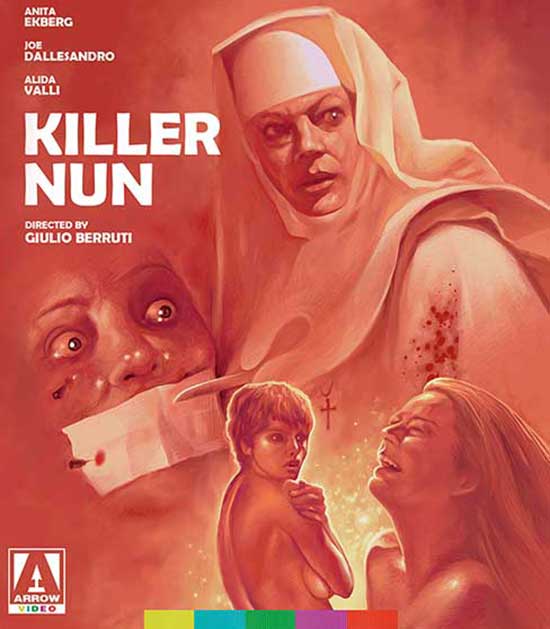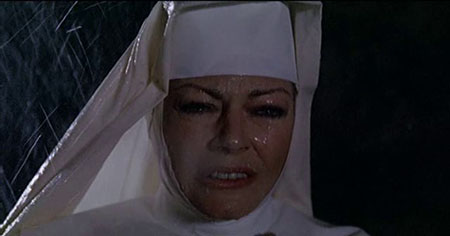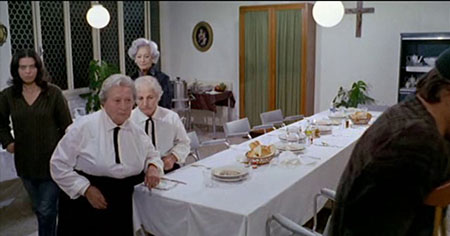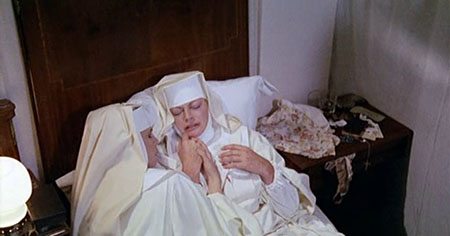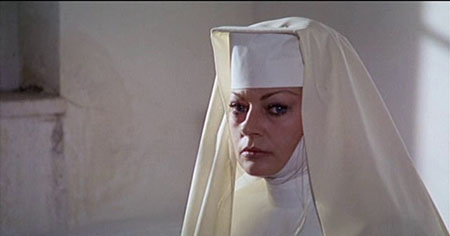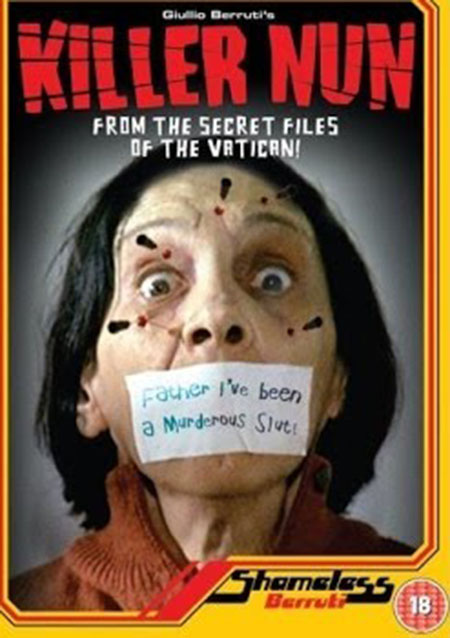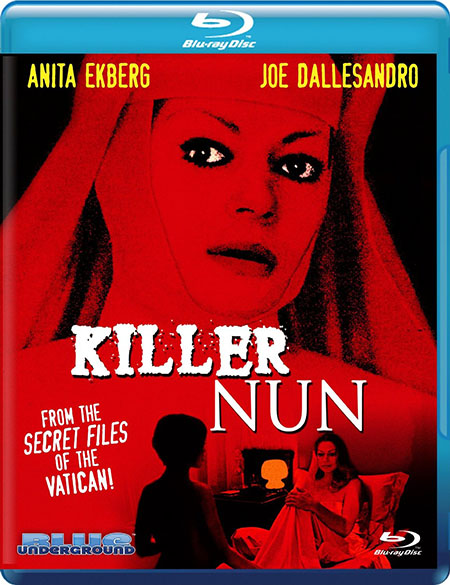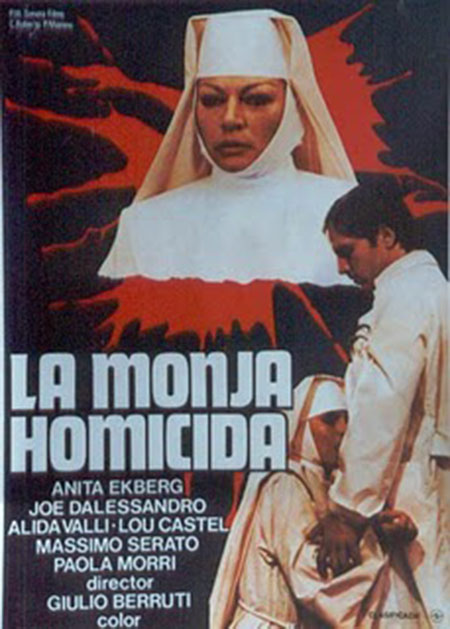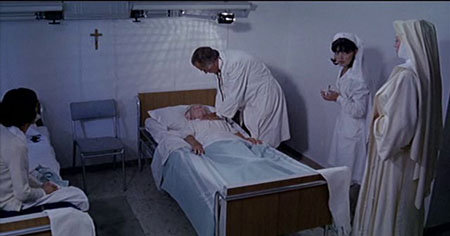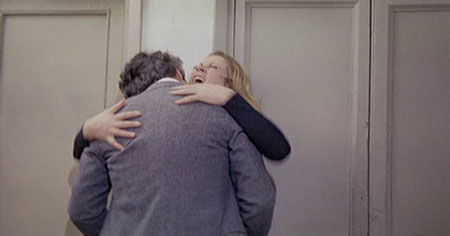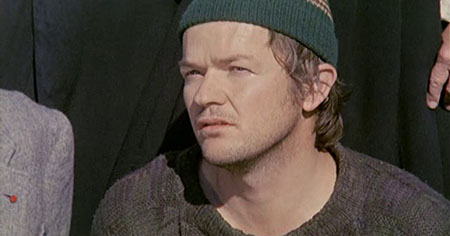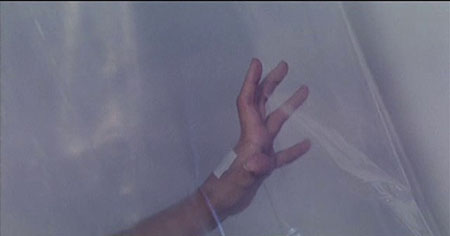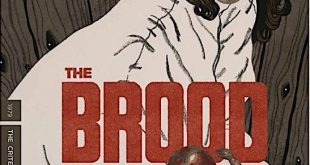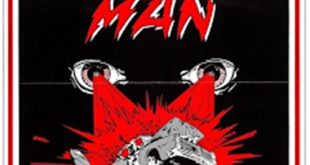SYNOPSIS:
Sister Gertrude (Anita Ekberg) is a nurse assigned to a geriatric sanitarium. This once dedicated nun recently underwent neurosurgery and since the operation she’s struggled with morphine addiction and hallucinations. To feed her drug habit, Sister Gertrude emotionally manipulates Sister Mathieu (Paola Morra), a younger, sexually infatuated nun, into stealing morphine. Sister Gertrude’s behavior grows more erratic, with escalating acts of cruelty directed towards the old folks in her care. A new doctor (Joe Dallesandro) arrives at the sanitarium and starts combing through medical records to track down the morphine thief. Now trapped in a web of lies, Sister Gertrude’s sanity crumbles and suddenly anyone she sees as a personal threat suffers a violent death—yet Sister Gertrude has no memory of committing these murders. Has she really become a killer nun, or is someone else in the hospital a psychopathic killer?
REVIEW:
Writer/director Giulio Berruti’s 1978 film Killer Nun was produced during a flood of similarly themed films collectively known as “Nunsploitation”—a subgenre inspired by Ken Russell’s immortally immoral The Devils (1971) and kicked into high gear by the Italians. It’s no surprise that Italy, a country that’s produced more altar boys than the rest of the world combined, embraced nunsploitation.
The films are an iconoclastic stab at Catholic dogma, depicting chaste, cloistered nuns suppressing their searing, pent up desires until they explode in blasphemous, orgiastic sins of the flesh… I think I just paraphrased every nunsploitation trailer! Nunsploitation films are packed with potent imagery—especially if you ever did time in a Catholic school getting knuckle-whacked by the sisters of mercy. The characters’ traditional nuns’ habits and vestments combined with the ominous trappings of Catholicism possess a taboo appeal that transcends religious upbringing. Even in Japan, where less than three percent of the population identifies as Christian, homegrown nunsploitation films like Norifumi Suzuki’s beautifully weird Convent of the Sacred Beast (AKA School of the Holy Beast 1974) were hits.
The seventies became a feeding frenzy of cheaply produced nunsploitation films, with those deacons of degeneracy Joe D’Amato (Images in a Convent 1979) and Jesus Franco (Love Letters of a Portuguese Nun 1977) leading the heretical hit parade. Many of these were period pieces, with centuries old villas doubling as convents. Finding starlets to play these 19th century naked nuns was a lot easier back in the seventies before today’s actresses started time stamping themselves with tattoos, breast implants and Brazilian waxes.
But nunsploitation films share one innate flaw with their sister genre, Women In Prison movies, in that both utilize limited dramatic arcs that can render them dull as a butter knife—the epitome of seen one … seen ’em all. There were still a few filmmakers who embraced the sub genre’s dramatic limitations while still creating something unique. Artistic endeavors like Walerian Borowczyk’s Behind Convent Walls (1978) combined its eroticism with scathing indictments of religious hypocrisy. Others like Mexico’s Satánico pandemonium (1975) and Alucarda (1978) are just mucho gusto fiestas of sex, violence and blasphemy—viva la Méjico!
Killer Nun came in at the tail end of this papal porn procession, meaning its producers had to decide whether to leap into the softcore sex realm with Franco and company or create something more upscale with a bit of star appeal that would stand out from the pack. They chose the latter—so don’t expect any satanic orgies, smoking hot nun-on-nun action or lonely sisters committing “solitary sin” with sacred relics. But in trying to uplift the sub genre they tossed out some of the key ingredients its built-in audience craved.
Berruti’s first misstep was making his nuns into nurses and caregivers assigned to a geriatric sanitarium—discarding the tried and true convent setting. Without that cloistered religious backdrop we lose the voyeuristic thrill of peering into a secret, taboo world. This was a critical mistake because nunsploitation films rely on a distinct unholy trinity to prop them up—a religious backdrop, blasphemous plotlines and, finally, casting innocent looking actresses willing to perform erotic scenes.
That final trinity leads us to Killer Nun’s next stumbling block—Anita Ekberg. During the 1960s this former Miss Sweden was considered one of cinema’s sexiest woman, and her unrestrained fountain dance in Fellini’s 1960 classic La Dolce Vita is the stuff of legend. But time and the celebrity high life took their toll, so by 1978 she was no longer willing to bare herself on camera. That’s a big problem for a film about an amoral, junkie nun who seduces men and women alike.
Ekberg also tried to hide her age behind heavy makeup and large false eyelashes—a vanity so inappropriate that it launches Sister Gertrude into the stratosphere of high camp; it’s as if she belonged to the order “Our Lady of Cosmetology”. Halfway through Killer Nun I realized how amazing drag legend Divine (Pink Flamingos) would have been in that role. Unfortunately, Killer Nun is written without a drop of campiness or humor. Sister Gertrude’s descent into madness would have been challenging for any performer, but despite her once sizzling screen presence Ekberg was never a strong dramatic actress. Even her most crazed moments fall flat, despite the director bolstering these scenes with some surreal visual touches.
She musters more energy in the scenes where she emotionally abuses Sister Mathieu (Paola Morra), an infatuated younger nun who’ll do anything to earn the older woman’s love. But I’m really not sure if Ekberg was acting. Watching this aging glamour queen berate and humiliate the younger actress is uncomfortable because Ekberg’s venom feels genuine, as does Morra’s humiliation—yet neither were particularly good actresses. I’m betting Killer Nun wasn’t a happy film set. There’s still one amusing moment when Ekberg’s Sister Gertrude glares at Morra’s bare breasts and scornfully calls them “Floppy,” proving her character is truly insane.
Paola Morra was a former Italian Playboy Playmate who’d also appeared in Borowczyk’s Behind Convent Walls. Since Ekberg wasn’t showing any skin, it fell on Morra to provide all of the film’s nudity—quite a burden to place on her bare shoulders. The problem is that all her screen time consists of either being humiliated by Sister Gertrude or debasing herself to protect the older nun, so even the nudity becomes depressing.
The new, crusading doctor is played by Andy Warhol discovery Joe Dallesandro (Flesh 1968, Trash 1970). In Flesh for Frankenstein (1973) and Blood for Dracula (1974) director Paul Morrissey cleverly used Dallesandro’s thick, inappropriate New York accent to comedic effect by never bothering to explain it—he was a Transylvanian peasant who inexplicably sounded like he’d just gotten off the subway. That distinctive voice and propensity to wander around naked became his onscreen trademarks. But in Killer Nun he keeps his clothes on and is re-dubbed by a monotone voiceover artist. Stripped of his assets, he becomes a piece of human furniture. In one particularly creepy scene Paola Morra tearfully begs him not to turn Sister Gertrude into the police, until she’s finally reduced to groveling at his feet and licking his zipper. Through it all he never displays a shred of emotion or even appears interested. It’s a shame because, despite Dallesandro never being a great actor, he was always fun to watch.
Writer/director Giulio Berruti tries to enhance Sister Gertrude’s hallucinations with some surreal visual tableaus. It’s a noble effort that provides the film’s most memorable visual moments. There are also some gruesome murders that landed Killer Nun on the fabled British “Video Nasties” list, including a genuinely flinch inducing bit of needle torture. But these grisly sequences have a “pasted in” feel, as if the producers saw trouble and decided to beef up the violence. I’m guessing there were some extensive pick-up shots done after principal photography. Maybe the producers should have pulled in those nunsploitation “pros from Dover” D’Amato and Franco to drag the film down to their audience pleasing level.
Despite its great title, Killer Nun isn’t “gunpowder, gelatine, dynamite with a laser beam,” and probably won’t blow your mind. So if you’re craving blasphemous, sexy squalor (be honest), just reach for that Mexican dynamic duo Satánico pandemonium and Alucarda. If you still want to explore this flat attempt at combining exploitation and high drama, Blue Underground’s Blu-ray restoration looks great and has a revealing interview with the director, who was clearly not a happy camper.
And now, after my extensive research into the realms of nunsploitation, I need to do fifteen Hail Marys and clear my browser history.
SPECIAL EDITION CONTENTS
• New 2K restoration from the original 35mm camera negative
• High Definition Blu-ray (1080p) presentation
• Uncompressed mono 1.0 LPCM audio
• Original English and Italian soundtracks, titles and credits
• Newly translated English subtitles for the Italian soundtrack
• Optional English subtitles for the deaf and hard of hearing for the English soundtrack
• New audio commentary by Italian genre film connoisseurs Adrian J. Smith and David Flint
• Beyond Convent Walls, a new video essay on nunsploitation and Killer Nun by critic Kat Ellinger
• Starry Eyes, a new interview with director Giulio Berruti
• Cut and Noise, a new interview with editor Mario Giacco
• Our Mother of Hell, a new interview with actress Ileana Fraia
• Original Italian and international theatrical trailers
• Image gallery
• Reversible sleeve featuring original and newly commissioned artwork by Daryl Joyce
 Horror News | HNN Official Site | Horror Movies,Trailers, Reviews
Horror News | HNN Official Site | Horror Movies,Trailers, Reviews
